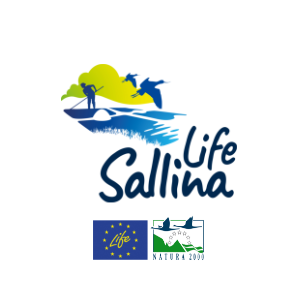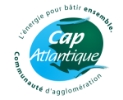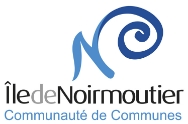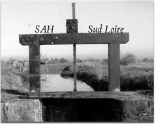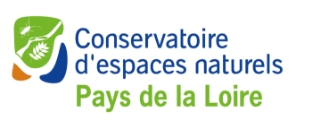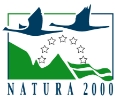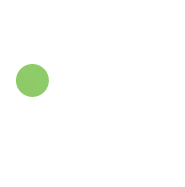Presentation
This action targets the following invasive exotic species: Baccharis (Baccharis halimifolia), Pampas Grass (Cortaderia selloana), Nutria (Myocastor coypus) and Muskrat (Ondatra zibethicus).
» Baccharis halimifolia :
The Baccharis commonly known as Sénéçon-en-arbre is a shrub native to North America and introduced to France in the 17th century for ornamental purposes. Since then, this invasive shrub has grown massively on the French Atlantic coast. The Baccharis has a strong power of dissemination and colonization. It colonizes both anthropized and natural environments. Baccharis is a very competitive plant which forms very dense thickets, causing the disappearance of local communities characteristic of coastal wetlands. The formation of these thickets considerably closes the environment and trivializes the landscapes. Due to its tolerance to salt and wind, Baccharis proliferates on the edge of salt flats where it has a “windbreak” effect contrary to the needs of salt workers and salt workers.
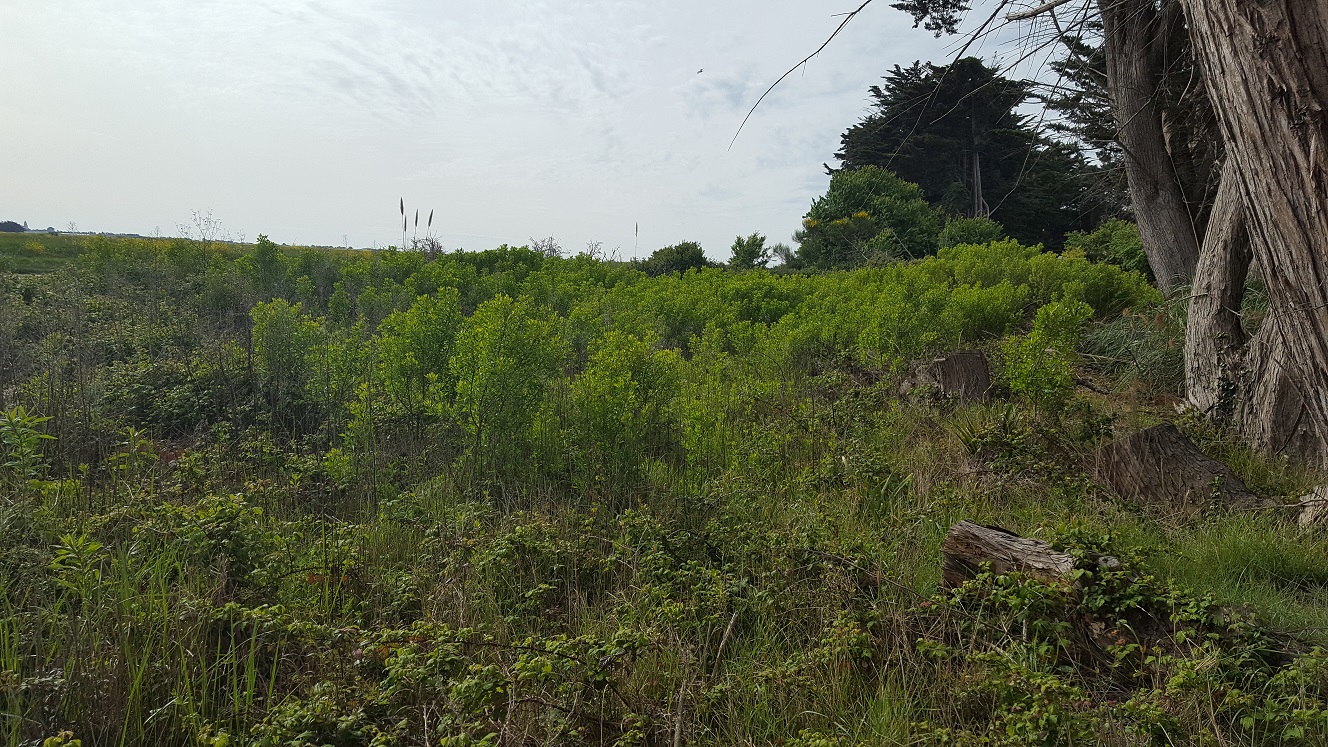
Thickets of Baccharis (photo credit : CCIN)
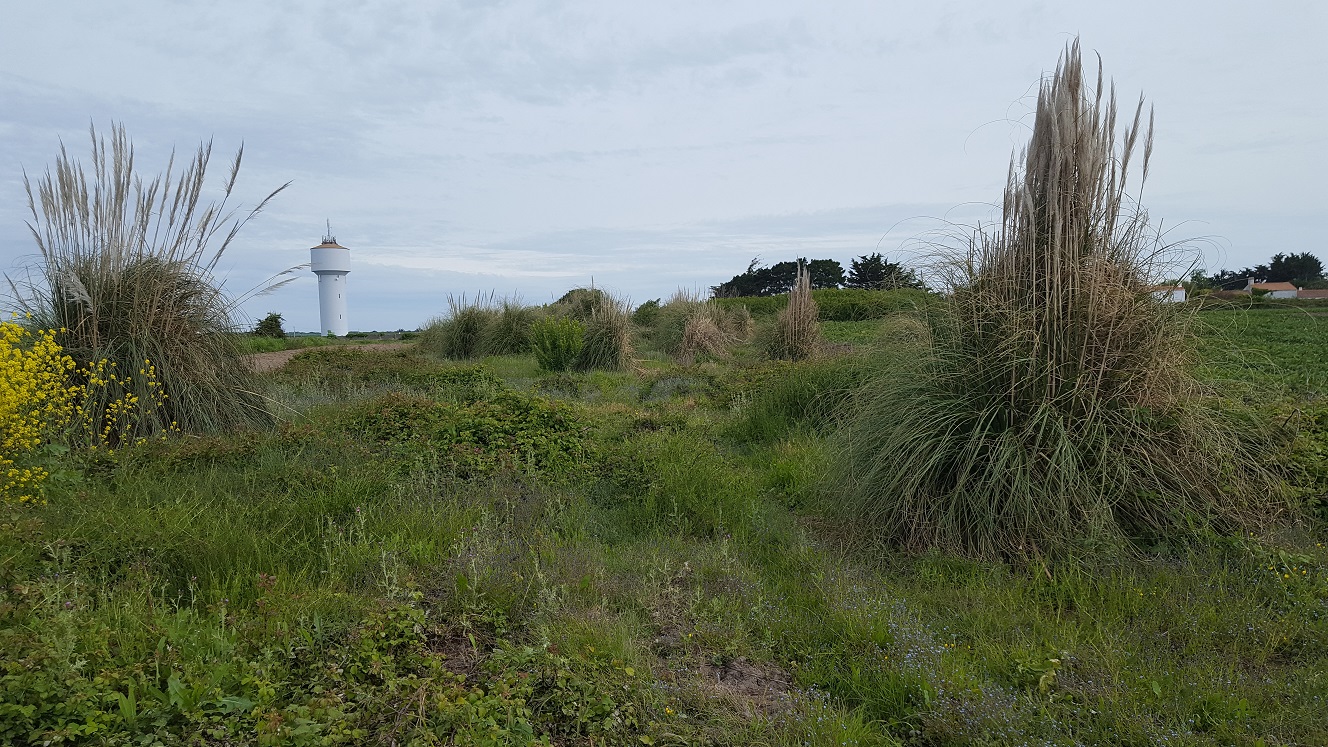
Pampas Grass field (photo credit : CCIN)
» Cortaderia selloana :
The Pampas Grass is a perennial herb that reaches 2 to 4 m in height. Originally from South America, it has however spread over many other territories such as the Atlantic and Mediterranean coasts. It is very easily recognizable by its flowers forming long fluffy whitish feathers. It is mainly found in disturbed environments such as wasteland, embankments, embankments, roadsides and paths. It is also very present in certain remarkable habitats such as wetlands (banks of marshes, riversides), sandy environments and lawns.
»The fight against exotic plant invasive species :
The control actions are carried out according to three techniques: mechanical action, action by animal traction and manual uprooting.
Depending on the territory, mechanical action (lifting with a mechanical shovel, grinding, rotavator, harrowing) may be favored on insensitive environments where a high density of large feet is observed. On the Guérande and Mès marshes, uprooting by animal traction (with draft horses) will be encouraged. On the marshes of Noirmoutier Island, this technique will be favored on more sensitive environments. This gentle technique works well on large subjects and limits the impact on wet ground. Finally, for young plants on small stations, manual uprooting will be implemented.
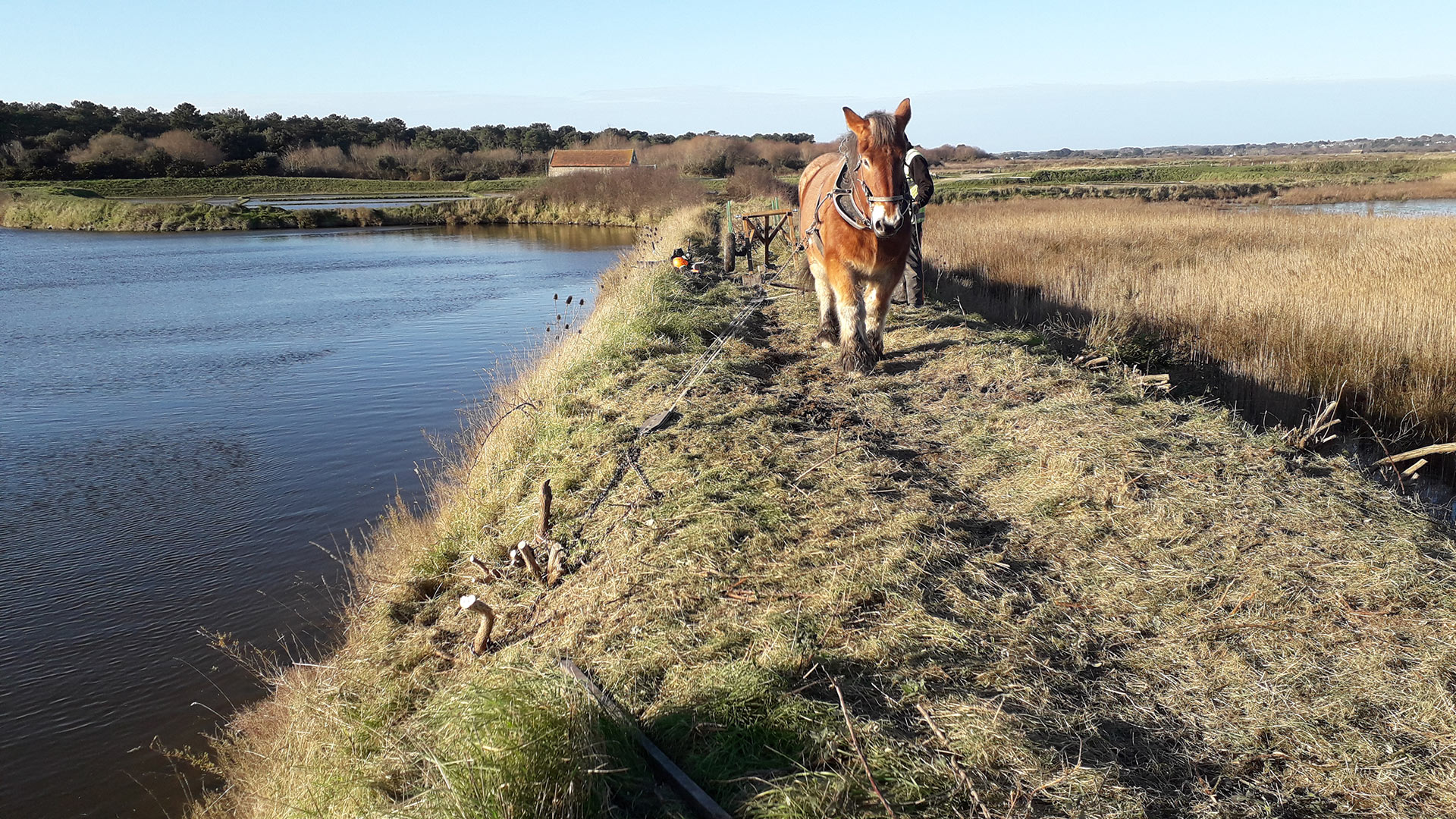
Baccharis uprooting by animal traction (Crédit photo : Cap Atlantique)
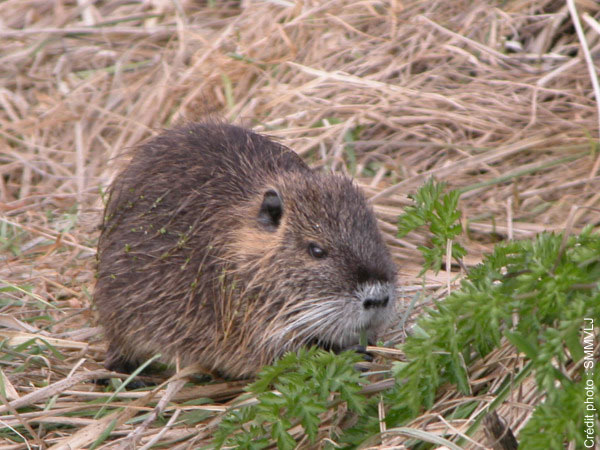
Nutria (photo credit : SMMVLJ)
» Myocastor coypus :
Nutria is a large aquatic rodent native to South America. Since its import into France in the 19th century for the exploitation of its fur, it has gradually colonized all of metropolitan wetlands. Only the cold limits its establishment. A couple of nutria generates offspring of 90 individuals in 2 years. Individuals weigh an average of 7 kg but can exceed 10 kg. This rodent is essentially herbivorous. It consumes about 25% of its weight in fresh vegetable matter per day (a nutria of 4 kg eats 1 kg of vegetables per day). This rodent lives in burrows dug in the banks of rivers, ditches or ponds. The volume of extracted earth can represent 1 to 2 m³.
In our marshes, there is no natural predator of the nutria adult.
» Ondatra zibethicus :
The Muskrat is native to North America. Imported for its fur in the 20th century, this aquatic rodent colonized the majority of French marshes in 50 years. This colonization is explained by its strong reproductive capacity (30 days of gestation) and sexual maturity at 10 months. This is why, a pair of Musk Rats generates around 400 individuals in 2 years. Unlike nutria, it tolerates cold periods very well. This small rodent, 750 g on average, is a herbivore, it also consumes some aquatic animals as well as shells (anodonts). Occasionally it can also feed on dead fish. The Muskrat lives in burrows dug in the banks. He also builds huts of plants which he cuts and piles up.
Unlike the nutria, the Muskrat knows many predators such as the Polecat (Mustela putorius), the Fox (Vulpes vulpes), the domestic cat (Felis silvestris catus) or the raptors. Note that the salt marshes are not the areas most sought after by the 2 species. Nutria can more easily colonize salt canals, especially in the presence of nearby freshwater ponds….
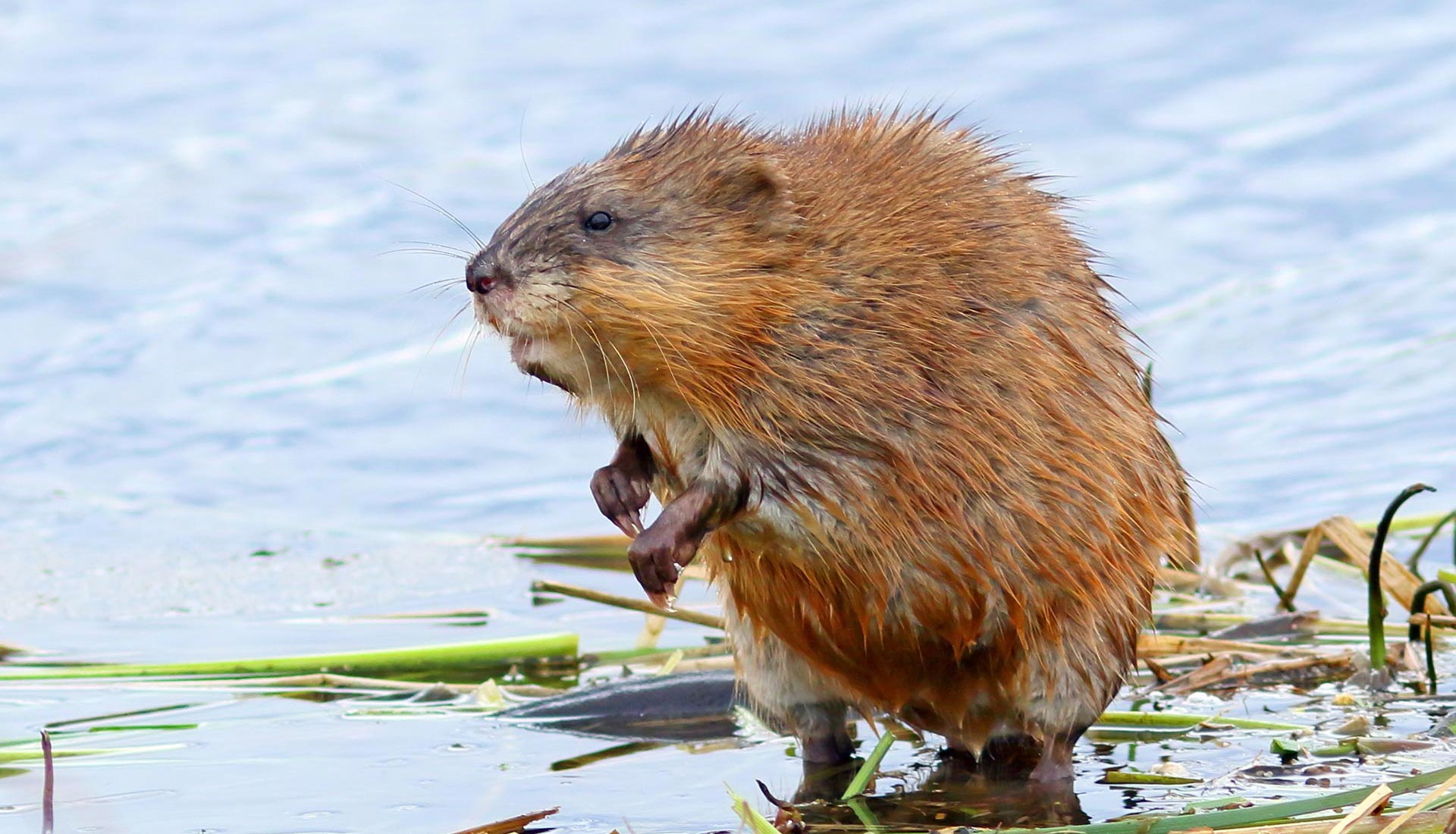
Muskrat (photo credit : Grigori Pisotski)
In addition to their introductions (exotic species) and their invasive characteristics (occupation of spaces to the detriment of local species), Nutria and Muskrats are qualified as harmful species.
They alter the environment by digging burrows: earth returned to the canals, turbidity of the water, weakening of the banks or even of hydraulic structures (locks, dikes, etc.); these born hawkers destroy the aquatic meadows and all the biodiversity linked to the meadows; their appetite creates damage to crops (corn, pasture meadows, trees …) finally like many rats, they are healthy carriers of diseases transmissible to humans and animals (liver fluke, leptospirosis, toxoplasmosis, … ).
These recognized nuisances contribute to the classification of these aquatic rodents at European level as invasive alien species – Regulation No. 1143/2014 on the prevention and management of the introduction and spread of invasive alien species.
At the national level, the 2 species are affected by regulations for the protection of plants (damage to crops) and a second for hunting and wildlife (harmful animals).
» The fight against invasive alien animal species :
Trapping actions are carried out in the LIFE sectors of the Guérande peninsula, the Millac marsh and the Doridon marsh on the island of Noirmoutier.
On the Guérande peninsula, this action is carried out by POLLENIZ, the only health watch organization authorized to implement actions to combat aquatic rodents. On the Millac marsh, the SAH plans to purchase cages to help the network of volunteer trappers. On Noirmoutier Island, the salt worker on the Doridon marsh will participate in the trap detection.
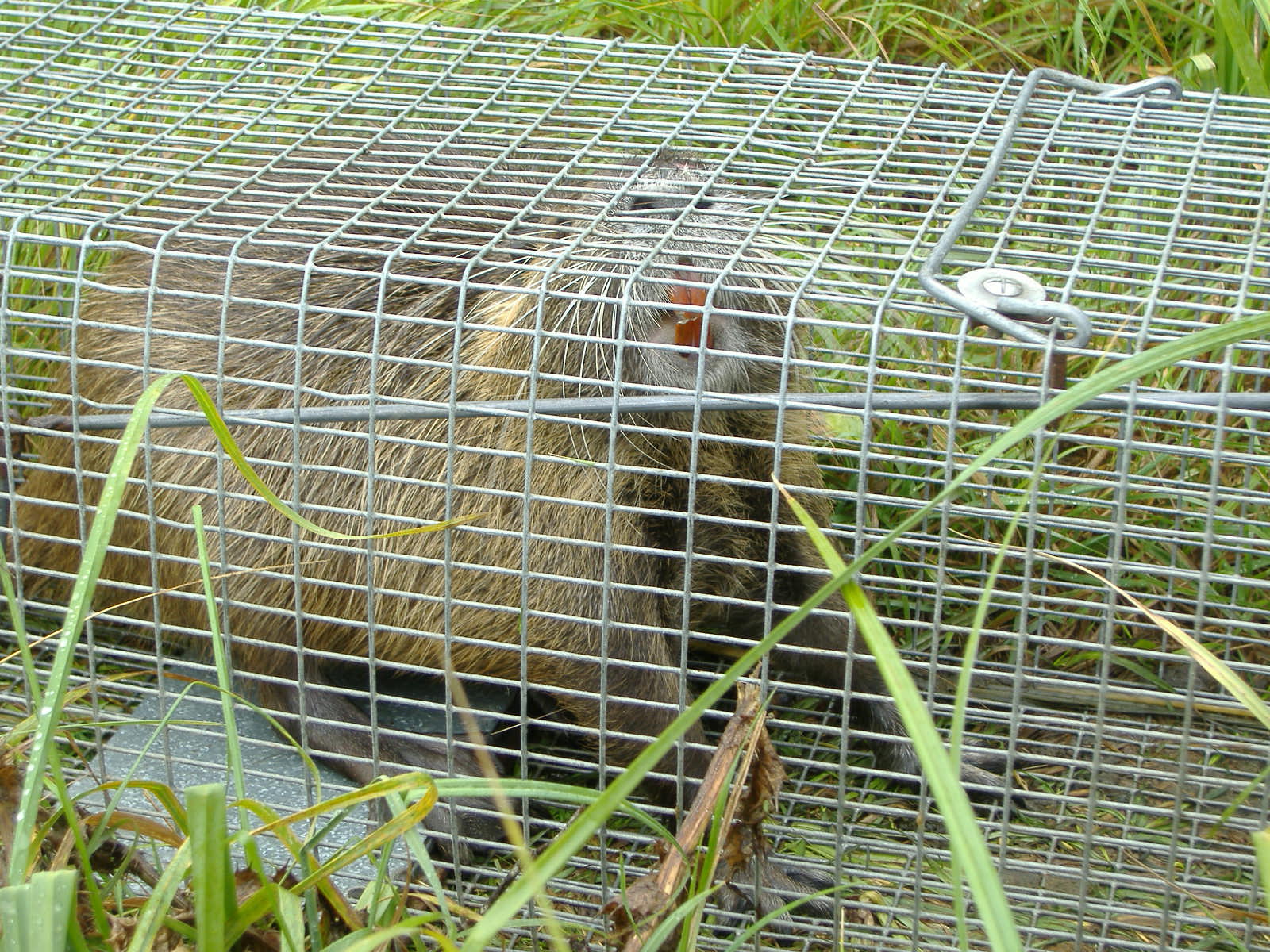
Nutria in a cage (photo credit : SAH)
Goals
This action aims to improve the state of conservation above all of the Atlantic salt meadows, and indirectly also that of the lagoon habitat, present on:
- all the salt marshes of the Guérande peninsula on 2,650 ha;
- the Millac marsh on 318 ha;
- the Noirmoutier salt marshes (around 60 ha colonized).
Advancement
Marshes of Guérande and Mès :
- A working group bringing together the actors of the marsh has been set up in order to define the areas of intervention on Baccharis each year.
- Since 2018, work has been carried out on more than 30 ha of marshland spread over the municipalities of Mesquer, Saint-Molf, Assérac and Guérande as well as on all of the restored pilot sites (37.5 ha).
Millac marsh :
- Work to limit the proliferation of Baccharis and Pampas Grass will begin in the fall of 2020 if weather conditions allow.
- The fight against nutria and muskrat is historic in the Breton Marsh. It has persisted since the appearance of the muskrat in the 1960s. The goal of the provision of cages by the SAH is to support or even intensify the fight, particularly near the restored basins. The action will start in 2021 in consultation with the network of trappers.
Île de Noirmoutier Marsh :
- The fight against invasive plant exotic species in 2019 was carried out on 37.2 ha.
- Work in progress for the year 2020.


